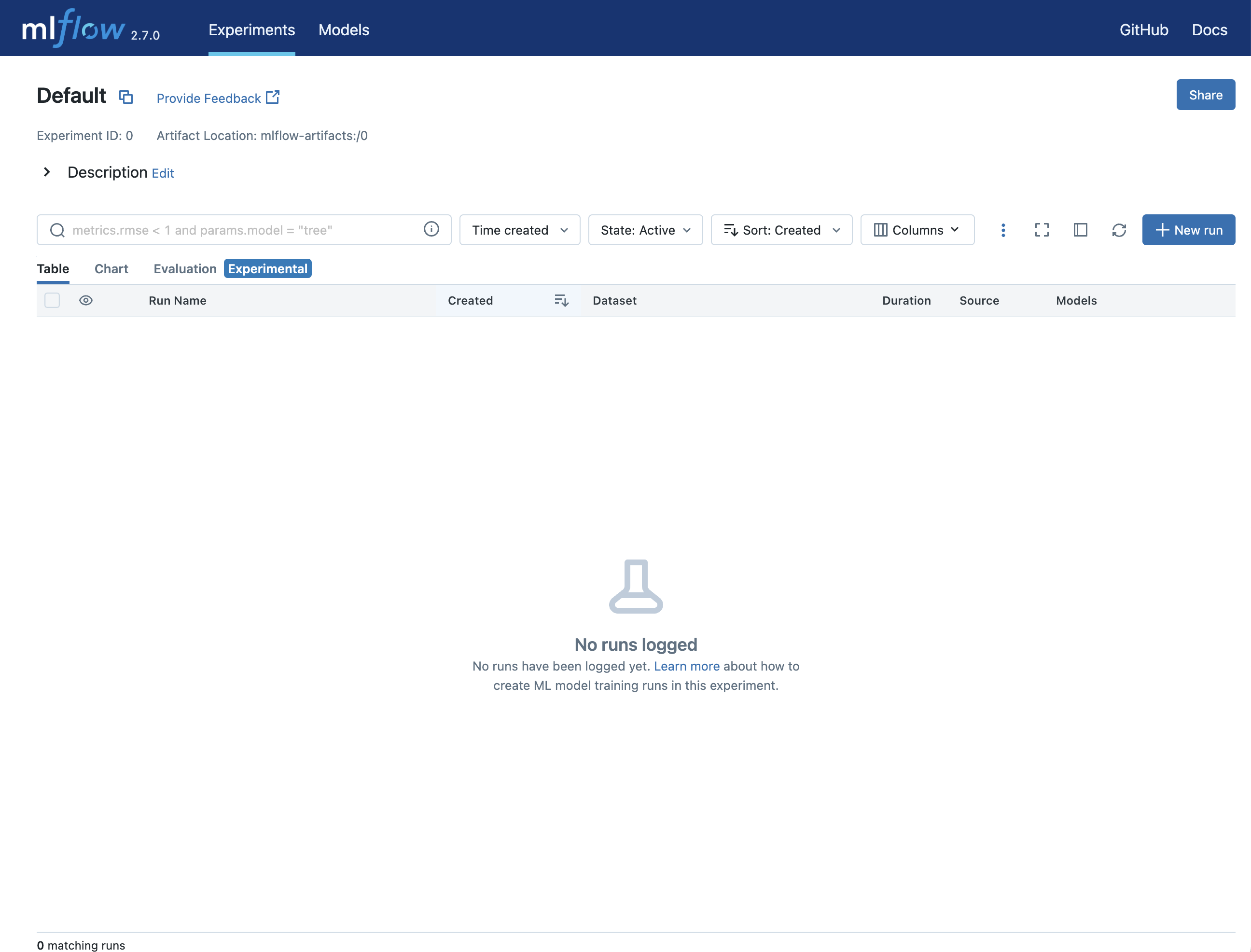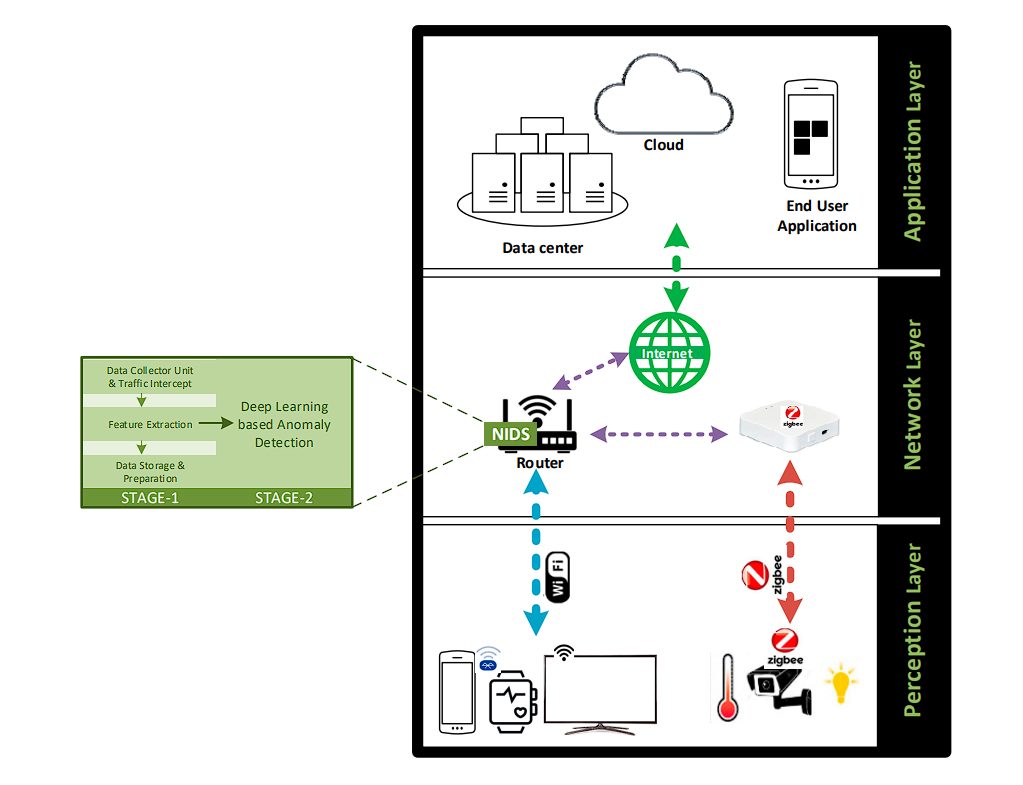MLflow is an open-source platform designed to manage the entire machine learning lifecycle, making it easier for ML Engineers, Data Scientists, Software Developers, and everyone involved in the process. MLflow can be seen as a tool that fits within the MLOps (synonymous with DevOps) framework.
Machine learning operations (MLOps) are a set of practices that automate and simplify machine learning (ML) workflows and deployments.
Many machine learning projects fail to deliver practical results due to difficulties in automation and deployment. The reason is that most of the traditional data science practices involve manual workflows, leading to issues during deployment.
MLOps aims to automate and operationalize ML models, enabling smoother transitions to production and deployment. MLflow specifically addresses the challenges in the development and experimentation phase.
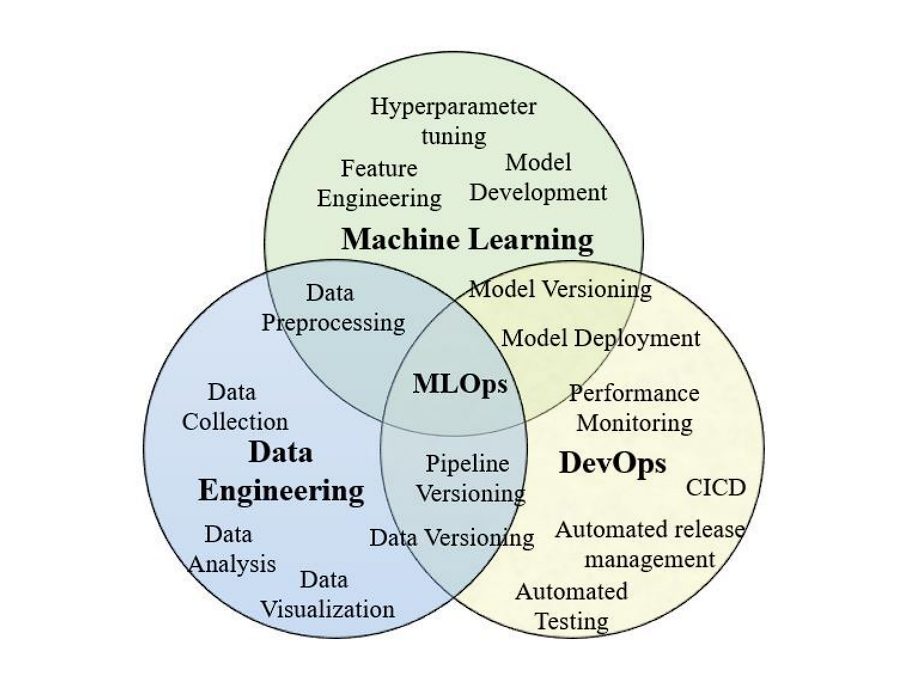
Stages Of ML Life Cycle
- Data Acquisition: Collect data from relevant sources to accurately represent the problem you’re solving.
- Data Exploration and Preparation: Clean and prepare the data for analysis, including identifying patterns and fixing inconsistencies. Data rarely comes in a clean, ready-to-use format.
- Model Training: This step involves selecting an algorithm, feeding it with training data, and iteratively adjusting its parameters to minimize error.
- Model Evaluation: Assess the performance of trained models to identify the most effective one.
- Deployment: Once a model is selected based on its evaluation metrics, it is deployed into a production environment. Deployment can take various forms, such as integrating the model into existing applications, using it in a batch process for large datasets, or making it available as a service via an API.
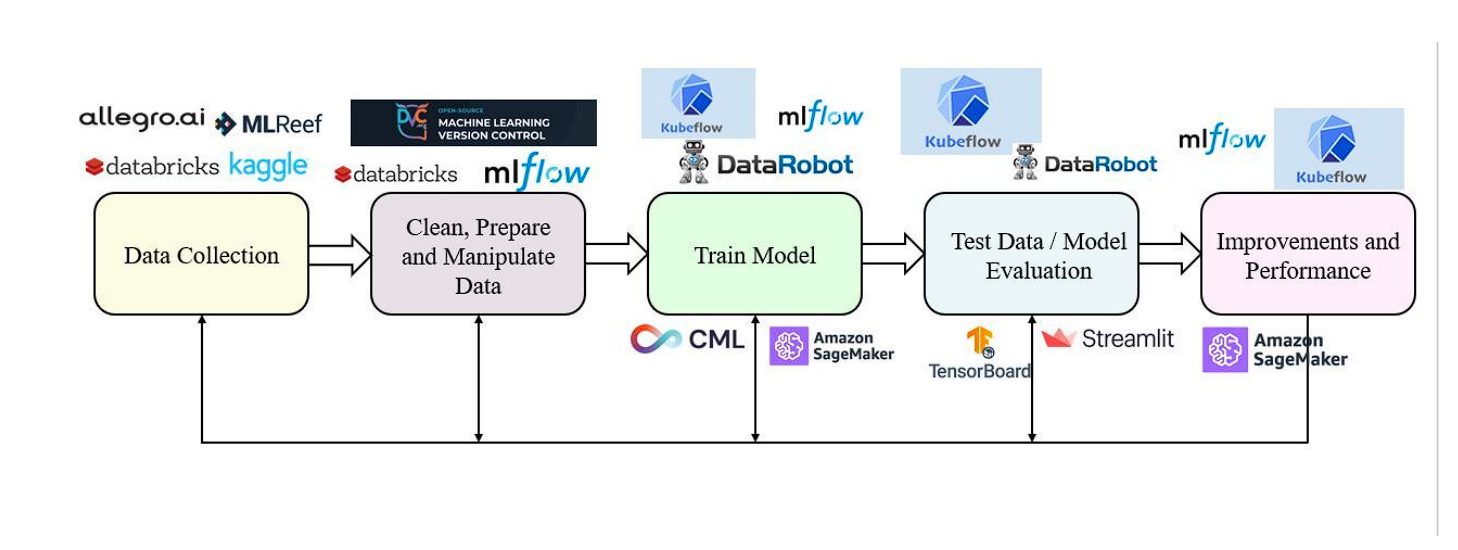
Automating these ML lifecycle steps is extremely difficult. Several models fail and many just reach the production stage. Here are the challenges engineers face during the development stage of ML models:
- A Variety of Tools: Unlike traditional software development, ML requires experimenting with various tools (libraries, frameworks) across different stages, making workflow management complex.
- Experiment Tracking: Numerous configuration options (data, hyperparameters, pre-processing) impact ML outcomes. Tracking these is crucial but challenging for result analysis.
- Reproducibility: The ability to reproduce results is crucial in ML development. However, without detailed tracking and management of code, data, and environment configurations, reproducing the same results is impossible. This issue becomes even more difficult when code is passed between different roles, such as from a data scientist to an AI software engineer for deployment.
- Production Deployment: Deploying models into production involves challenges related to integration with existing systems, scalability, and ensuring low-latency predictions. Moreover, maintaining CI/CD (continuous integration and continuous delivery) is even more challenging.
Viso Suite: By consolidating the entire ML pipeline into a unified infrastructure, Viso Suite makes training models and deploying them anywhere, easy. By using Viso Suite to manage the entire lifecycle, ML teams can cut the time-to-value of their applications to just 3 days. To learn more, book a demo.

What is MLflow?
MLflow is an open-source platform that helps streamline the ML process, by following the MLOps framework. It can be divided into four major components:
- MLflow Tracking: An API for recording experiment details. This includes the code used, parameters set, input data provided, metrics generated during training, and any output files produced.
- MLflow Projects: MLflow Projects provides a simple format for packaging machine learning code into reusable projects. Each project can specify its environment (e.g., required libraries), the code to execute, and parameters that allow programmatic control within multi-step workflows or automated tools for hyperparameter tuning.
- MLflow Models: MLflow Models provide a generic format for packaging trained models. This format includes both the code and data essential for the model’s operation.
- Model Registry: This serves as a centralized place where you can see all your ML models. Providing features such as collaboration and model versioning.
What is MLflow Tracking?
MLflow Tracking is an API that helps you manage and monitor your machine-learning experiments. The API helps to log, track, and store information regarding experiments. You can use the API using Python, REST, R, and Java.
Here are the terms/features of MLflow tracking:
- Runs: In MLflow, a “Run” is an individual execution of machine learning code. Each run represents a single experiment, which could involve training a model, testing a set of hyperparameters, or any other ML task. They serve as containers to provide a structured way to record the experimentation process.
- Experiments: Group-related runs made together. This helps organize your experiments and compare runs within the same context.
- Tracking APIs: These APIs allow you to programmatically interact with MLflow Tracking to log data and manage experiments.
- Tracking UI: A web interface for visualizing experiment results and exploring runs.
- Backend Store: MLflow integration supports two types of storage for the backend: local files or database-based like PostgreSQL.
- Artifact Store: Stores larger files generated during your runs, such as model weights or images. You can also use Amazon S3 and Azure Blob Storage.
- MLflow Tracking Server (Optional): An optional component that provides a central service for managing backend stores, artifact stores, and access control.
MLflow Tracking offers flexibility to adapt to your development workflow. You can use it to track models locally or in the cloud.
- Local Development: For solo development, MLflow stores everything locally by default, without needing any external servers or databases.
- Local Tracking with Database: You can use a local database to manage experiment metadata for a cleaner setup compared to local files.
- Remote Tracking with Tracking Server: For team development, a central tracking server provides a shared location to store artifacts and experiment data with access control features.
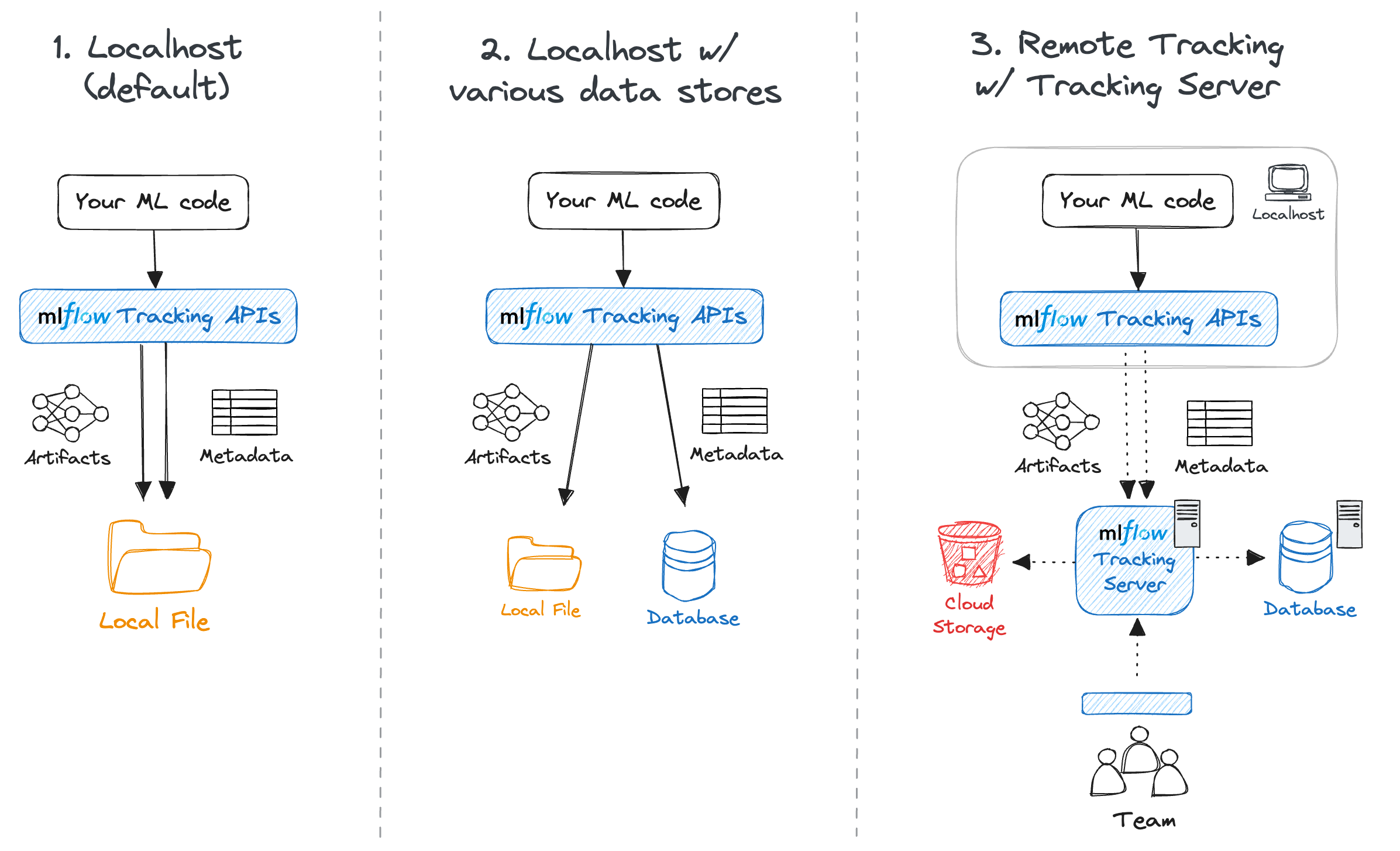
Benefits of Tracking Experiments
Experiment tracking of your ML model with MLflow brings several key benefits:
- Comparison: MLflow Tracking allows you to effortlessly compare different Runs, and analyze how changes in parameters or training configurations impact model performance. This facilitates identifying the best-performing models for deployment.
- Reproducibility: Experiment tracking captures all the intricacies of a Run, including code versions, parameters, and metrics. This ensures you can reproduce successful experiments later.
- Collaboration: You can share your experiment results with team members and ask for help when stuck.
What are Projects?
Projects offer a standardized way to package the ML code into projects for reusability and reproducibility.
Each MLflow Project is a directory containing code or a Git repository. It’s defined by a YAML file called MLproject, which specifies dependencies (using Conda environment and docker image container) and how to run the code.
Projects provide flexibility in execution using project entry points, which are multiple entry points with named parameters, allowing users to run specific parts of the project without needing to understand its internals. These parameters can be adjusted when the project is run.
The core of an MLflow Project is its MLproject file, a YAML file that specifies:
- Name: Optionally, the name of the project.
- Environment: This defines the software dependencies needed to execute the project. MLflow supports virtualenv, Conda, Docker containers, and the system environment.
- Entry Points: These are commands within the project that you can invoke to run specific parts of your code. The default entry point is named “main”.
Projects can be submitted to cloud platforms like Databricks for remote execution. Users can provide parameters at runtime without needing to understand project internals. MLflow automatically sets up the project’s runtime environment and executes it. Moreover, projects can be tracked using the Tracking API.
Using projects in your ML pipeline provides the following benefits:
- Reusable Code: Share and collaborate on packaged code.
- Reproducible Experiments: Ensure consistent results by capturing dependencies and parameters.
- Streamlined Workflows: Integrate projects into automated workflows.
- Remote Execution: Run projects on platforms with dedicated resources.
MLflow Models
MLflow models allow the packaging of the entire trained ML or AI model into multiple formats (e.g, TensorFlow or PyTorch), which the developers have named as “flavor”.
The important feature of this is that the same ML model can be deployed in a Docker container for real-time REST serving, and at the same time, can be deployed as an Apache Spark user-defined function for batch inference.
This multi-flavor system ensures that a model can be understood and used at various levels of abstraction. Additionally, you don’t need to tweak and manage lots of tools. Here are a few flavors:
- Python Function -: This versatile flavor allows packaging models as generic Python functions. Tools that can execute Python code can leverage this flavor for inference.
- R Function
- Spark MLlib
- TensorFlow and PyTorch
- Keras (keras)
- H2O
- scikit learn
MLflow Model Structure: The MLmodel file is a YAML file that lists the supported flavors and includes fields such as time_created, run_id.
Benefits of Flavors in Models
- Models can be used at different levels of abstraction depending on the tool.
- Enables deployment in various environments like REST API model serving, Spark UDFs, and cloud-managed serving platforms like Amazon SageMaker and Azure ML.
- Significantly reduces the complexity associated with model deployment and reuse across various platforms.
Model Registry
This component offers a centralized system for managing the entire lifecycle of machine learning models (a model store), offering functionalities such as versioning, storing models, aliases, and annotations.
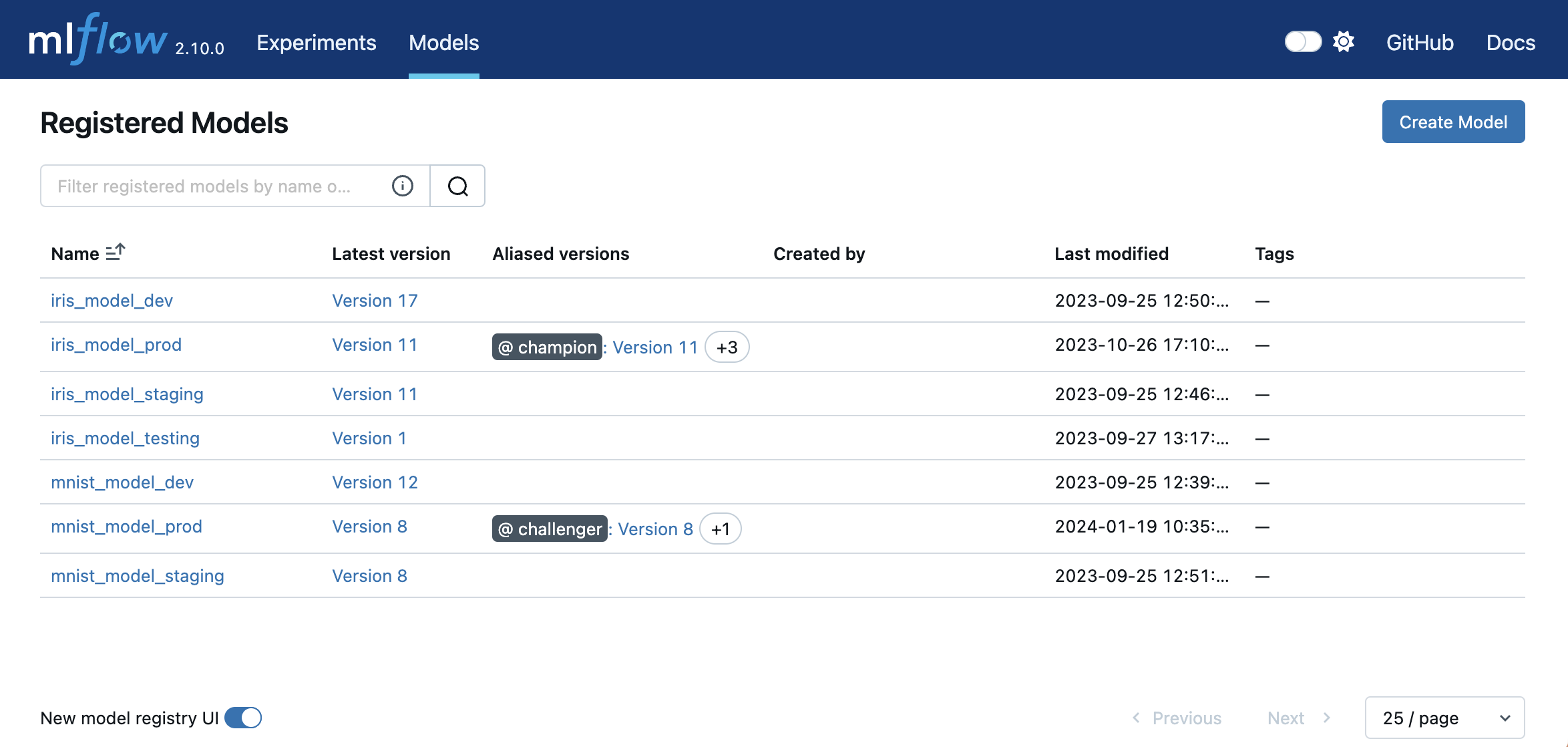
- Model Version:
- Each registered model can have multiple versions.
- New models added to the same registered model become new versions (i.e. version number increases).
- Can have tags for tracking attributes (e.g., pre-deployment checks).
- Model Alias:
- A flexible reference to a specific model version.
- Lets you use a name (alias) instead of the full model URI.
- Tags:
- To label and categorize, attach key-value pairs to models and versions.
- Example: “task” tag for identifying question-answering models.
- Annotations and Descriptions:
- Markdown text for documenting models and versions.
- Include details like algorithm descriptions, datasets used, or methodology.
- Provides a central location for team collaboration and knowledge sharing.
Setting Up MLflow
When setting up MLflow, you can run it locally on your machine, on a server, or in the cloud. To read more on how to set it up, click here.
- Local Setup: Run MLflow locally for individual use and testing. Simply install MLflow using pip, and you can start logging experiments immediately using the file store on your local filesystem.
- Server Setup: You may want to set up an MLflow tracking server for team environments to allow access by multiple users. This involves running an MLflow server with specified database and file storage locations. You can use a database like MySQL or PostgreSQL for storing experiment metadata and a remote file store like Amazon S3 for artifacts.
- Cloud Providers: MLflow can also integrate with cloud platforms, allowing you to leverage cloud storage and compute resources. Providers like Databricks offer managed MLflow services, simplifying the setup process.
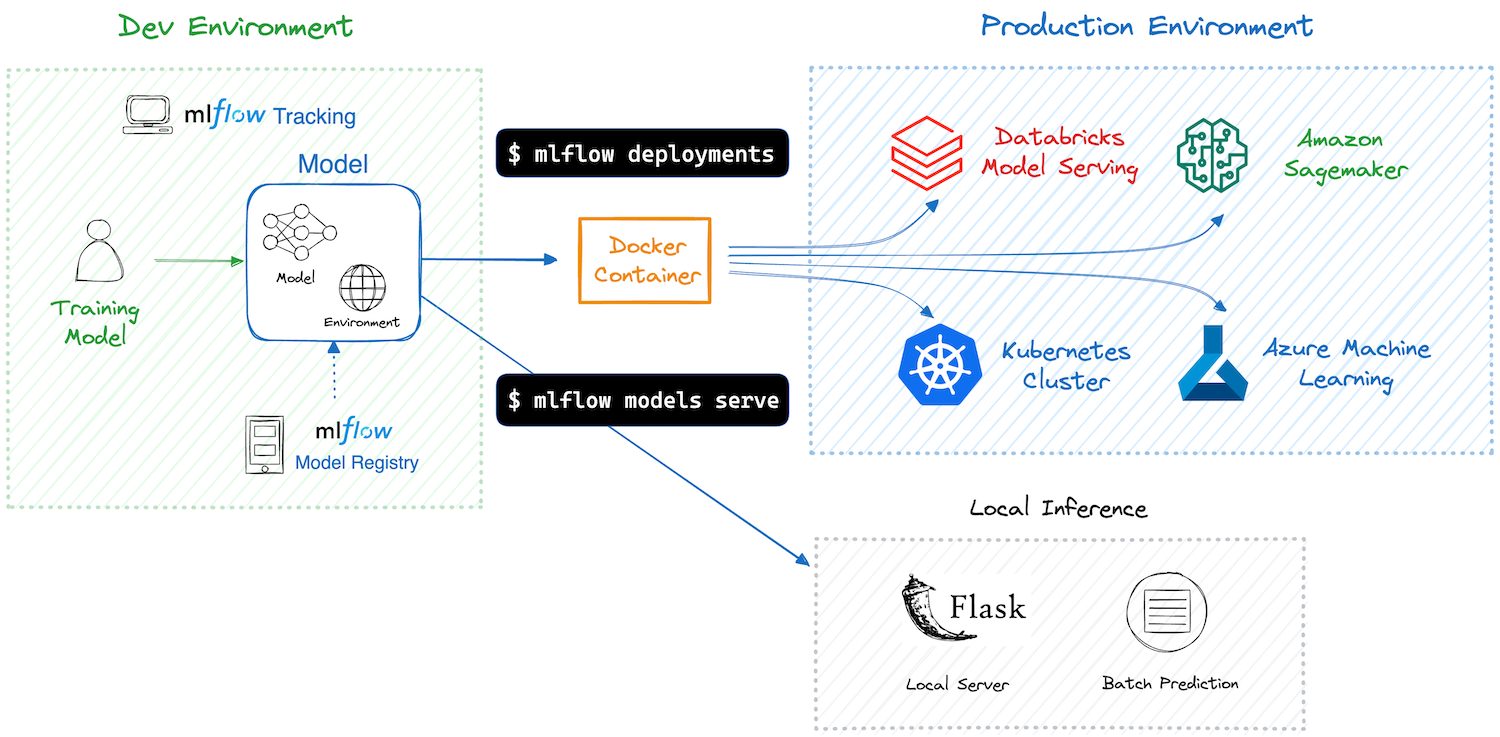
Interacting with MLflow
MLflow provides various ways to interact with its features:
- MLflow APIs: MLflow offers Python, R, and Java APIs that enable you to log metrics, parameters, and artifacts, manage projects, and deploy models programmatically. These APIs are the primary way in which most users interact with MLflow.
- MLflow UI: MLflow includes a web-based UI that allows you to visualize experiments, compare different runs, and manage models in the Model Registry. It’s a convenient way to review and share results with team members.

MLflow UI –source - CLI: The MLflow Command-Line Interface (CLI) is a powerful tool. It allows users to interact with MLflow’s functionalities directly from the terminal, offering an efficient way to automate tasks and integrate MLflow into broader workflows or CI/CD pipelines.
Example Use Cases of MLflow
Here are a few hypothetical scenarios where MLflow can enhance ML model package development.
- IoT Anomaly Detection: A manufacturing company uses the Model Registry to manage anomaly detection models deployed on their production equipment. Different versions of the model can be staged and tested before deployment to ensure they accurately identify potential equipment failures and prevent costly downtime.

IoT Architecture –source
- IoT Anomaly Detection: A manufacturing company uses the Model Registry to manage anomaly detection models deployed on their production equipment. Different versions of the model can be staged and tested before deployment to ensure they accurately identify potential equipment failures and prevent costly downtime.
- Autonomous Vehicle Development: A company developing self-driving cars leverages MLflow Projects to ensure the reproducibility of their perception and control algorithms. Each project version is stored with its dependencies, allowing them to replicate training runs and easily roll back to previous versions if needed.
- Personalized Learning Platform: A company tailors educational content for individual students. MLflow Tracking helps track experiments by comparing different recommendation algorithms and content selection strategies. By analyzing metrics like student engagement and learning outcomes, data scientists can identify the most effective approach for personalized learning.
- Fraud Detection: A bank uses MLflow to track experiments with various machine learning models for fraud detection. They can compare different models’ performance under various conditions (e.g., transaction size, location) and fine-tune hyperparameters for optimal fraud detection accuracy.
- Social Media Content Moderation: A social media platform uses the MLflow Model Registry to manage the deployment lifecycle of content moderation models. They can version and stage models for different levels of moderation (e.g., automated vs. human review) and integrate the Model Registry with CI/CD pipelines for automated deployment of new models.
- Drug Discovery and Research: A pharmaceutical company utilizes MLflow Projects to manage workflows for analyzing large datasets of molecules and predicting their potential effectiveness as drugs. Versioning ensures researchers can track changes to the project and collaborate effectively.

